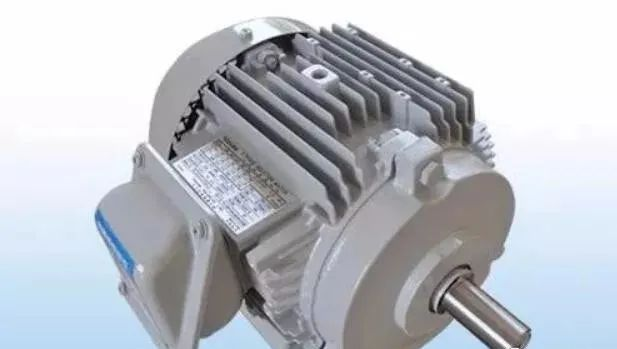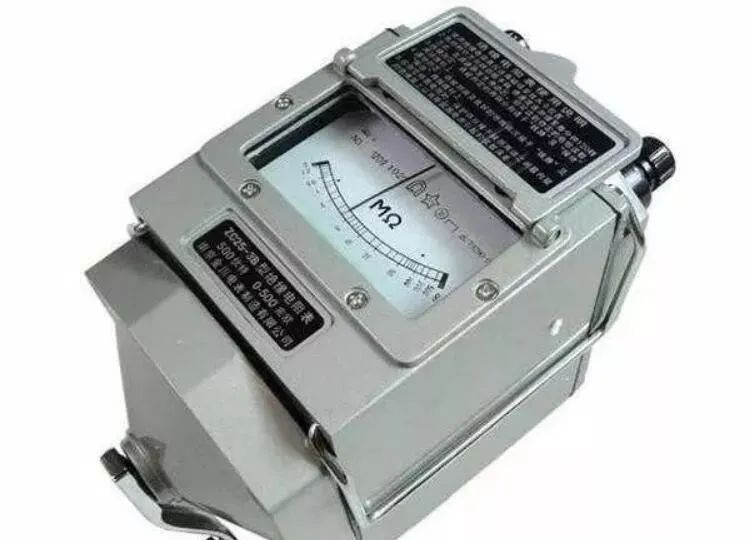![]()
Between a megohmmeter and a multimeter, which one is more reliable for measuring motors? What's the difference? In fact, many electricians use the wrong
Motors are our common electrical equipment, so how can we simply measure the quality of motors? Motors are electrical equipment that we often come into contact with, and they are also the most basic equipment. This is considered a basic skill, and it can also be used as a backup method. When relevant measurement tools are missing, measurements can be carried out without delaying the work process! First, let’s talk about measuring three-phase motors with a multimeter: Adjust the multimeter to the Ω×1 range to test and judge the resistance. Operation 2 is as follows: ①Measure whether the motor is leaking electricity. Measure the resistance between the three wires and the casing respectively (the test leads and the casing must be in good contact). If the resistance value is ∞, then the insulation of the winding coil is good. Otherwise, the motor will leak electricity. ②Measure whether the motor winding coil is open circuit. Measure the three wires in pairs. If one of the resistance values is ∞, then at least one set of winding coils is disconnected. ③Measure whether the motor coil is short-circuited between turns. Measure the three wires in pairs. If the resistance values measured three times are the same, then the motor is good and the motor can be determined to be a three-phase motor. ④If the three resistance values R, R′, R″ are measured, and R=R′+R″, then the motor is good, and the motor can be determined to be a single-phase motor, and the main resistance of the single-phase motor can also be determined. Secondary winding and center tap.
If the measurement result does not match the situation, or the measurement value is 0, then the coil turns are short-circuited, that is, the motor is broken. Under normal circumstances, if the motor cannot start when it is determined that there is no problem with the power supply, use a multimeter to set the ohm level, connect the red test lead to one terminal of the motor, and the black test lead to the other terminal of the motor. (When making measurement judgments, it is best to disconnect the power incoming line to avoid interfering with the results) If there is resistance (small resistance) measured, it means the coil is good; if the resistance is 0, it means the motor coil is short-circuited (phase-to-phase short circuit) . To test the grounding, use one end of the multimeter probe to test any terminal of the motor, and the other end to test the motor casing. If the multimeter resistance is zero, it means the motor is grounded (phase-to-ground short circuit). If it cannot be confirmed with a multimeter, then we have to use a megometer. Before using the megometer, we need to check the open circuit and short circuit of the megometer. Open circuit check: Before the megohmmeter is connected to the resistance to be measured, leave the terminals L and E in the air, and shake the handle to make the generator reach the rated speed of 2r/s (maintain 2 revolutions per second). The pointer of a good meter should be pointing at the mark. The position of the scale "∞". Short circuit check: Short-circuit terminal buttons L and E, and slowly shake the handle. The pointer of a good watch should be at the "0" position of the scale. When the oscillator is normal, measure the phase-to-phase resistance: Connect the terminals L and E of the oscillator to the terminals of any two phases, and shake the oscillator slowly. With a normal motor, the inter-phase resistance should be around 0, and The resistance between any two phases should be close. Measure the phase-to-ground resistance: Connect terminal L of the megger to the phase line terminal, and connect E to the motor casing. The resistance of the shaking watch should be greater than 2MΩ, and it should be greater than 0.5MΩ in a supermarket environment. The resistance between the watch and the ground should be greater than 5MΩ. If it is lower than 0.5Ω, it is abnormal. Even if it can be used, it will not last long because the insulation is not enough. Note: (1) If the resistance between the phase winding and the motor shell is less than 0.5MΩ: ① The insulation between the motor windings and the motor casing is poor. If it is continued to be used, the motor will be easily damaged and the motor will easily leak electricity. ② The winding coil may be partially burned out and short-circuited. If you continue to use it, the motor will have insufficient power or the winding will be completely burned out. ③ Exceeding the water content and other reasons may easily cause the motor to burn out and leak electricity. (ii) The megometer is not allowed to be shaken for a long time to measure resistance, because the voltage of the megometer requires the rated voltage of the high-voltage motor. Long-term measurement may cause the motor insulation to breakdown, causing short circuit or leakage. (iii) If there is a connecting piece at the motor terminal, you need to disconnect the connecting piece. The speed control motor will be slightly different. Measurement and Judgment Criteria for Motor Fault Current As our maintenance electricians, the measurement of motor fault current is a top priority. The measurement judgment standard is set as: the difference between any one-phase current value and the average value of the three-phase current is not more than 10%. For a normally operating motor, its three-phase currents are basically balanced when the power supply voltage is balanced. During the operation of an asynchronous motor, if the three-phase current is seriously unbalanced using an ammeter or clamp ammeter, it may be caused by the following reasons. 1. For some reason, the three-phase voltage is unbalanced, resulting in an unbalanced three-phase current. If the phase loss of the power supply or poor contact of one phase causes the motor to run without phase, for the star connection motor, the current in the other two phase windings will rise sharply, while for the delta connection motor, the current in the one phase winding will rise sharply. Over time, the winding will be burned, which is the most harmful situation. According to statistics, this type of failure accounts for more than 50% of motor burnout accidents. 2. A branch circuit in the three-phase winding is open, causing the three-phase impedance to be inconsistent, so the three-phase current is unbalanced. 3. An inter-turn or grounding short-circuit fault occurs in the motor winding. If the fault is serious, overcurrent devices such as circuit breakers will trip. If it is not serious, they often will not trip. At this time, the three-phase current is unbalanced. The winding current of a latent short-circuit fault is very large, causing the winding to generate additional heat. If the time is slightly longer, the fault will further expand. Once such a fault is discovered, the machine should be shut down immediately for maintenance. 4. During the maintenance process of the motor (such as rewinding the stator winding of the motor), due to the wrong phase start and end, causing one phase to be connected in reverse, an extremely uneven rotating magnetic field will be formed, resulting in a large current in that phase, and difficulty in starting. The author personally encountered the abnormal phenomenon of loud noise once during the test run of an electric motor after overhaul. 5. If the three-phase ammeter pointer of a squirrel-cage motor swings periodically during operation, especially for motors that frequently start and stop or rotate forward and reverse, the possibility of broken squirrel-cage rotor bars should be considered. Manual diagnosis method of motor fault by looking, listening, smelling and touching Motor faults during operation can be checked through specialized testing equipment, but a more timely fault diagnosis method is to judge through manual intuitive feelings such as seeing, listening, smelling, and touching. 1. The smell of electric motors Abnormalities in the motor part can also cause the emission of odor. For example, when the internal temperature of the motor is too high, the smell of paint may evaporate. If the insulation layer repair network is abnormal, the smell of burnt items may also appear. 2. Look at the electric motor 1. If there is a short circuit in the stator winding of the motor, it will generally be accompanied by smoke. 2. Overload operation of the motor will cause the speed to decrease. 3. If the motor maintenance network runs abnormally or stops, sparks may occur due to ignition, and the fuse may also blow or components may become stuck. 4. Problems such as the motor's transmission device being blocked, the motor's fixation being unstable, the motor's foot bolts being loose, etc. will all cause severe vibrations during the operation of the motor. 5. If the internal contact points and connections of the motor are abnormally colored or have traces of fire or smoke, then the possible problems may be local overheating of the motor, poor contact of the motor conductors, or burnt motor windings. 3. Listening of electric motor 1. Uneven air gaps between the stator and rotor of the motor, unbalanced three-phase current and loose iron core will cause the motor to emit electromagnetic noise that changes in level. 2. If there are abnormal sounds from the bearings of the motor, there may be several reasons, including squeaking sounds due to lack of lubrication in the bearings, chirping sounds caused by drying up of the rolling ball grease, and clicks or creaking sounds caused by damaged bearing balls. 3. The driving mechanism and the driven mechanism of the motor will also have abnormal sounds. If it is a uniform snapping sound, it means that there is a bulge in the belt joint. If it is a uniform thumping sound, it means there is a gap between the coupling or the pulley and the shaft. Looseness and wear of the key or keyway. If it is an uneven knocking sound, it may be that the fan blades and the outer cover have collided. The touch of the motor mainly refers to the judgment of the motor temperature. When some of the following faults occur, it will cause the motor to overheat, including poor ventilation, motor overload, motor short circuit, three-phase current imbalance, too frequent starting or braking of the motor, and The bearing temperature of the motor is abnormal.



